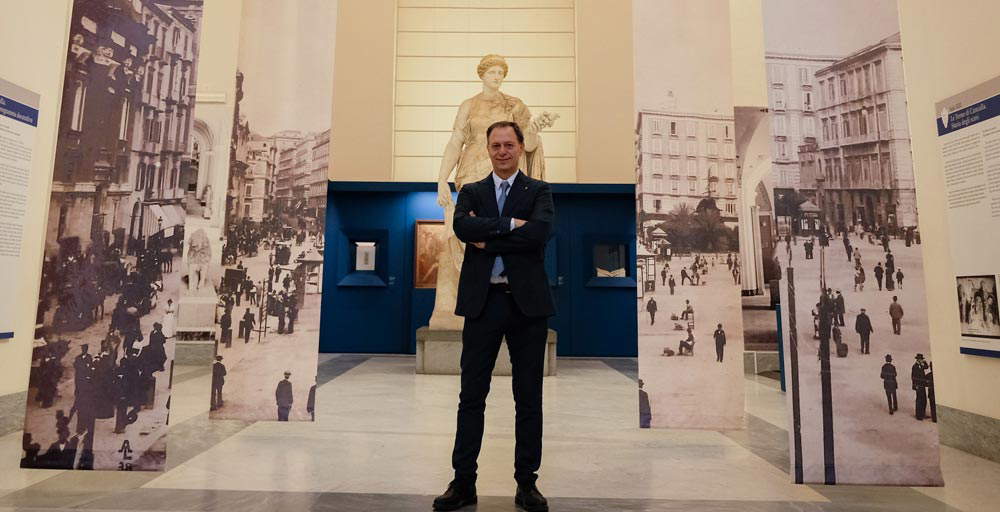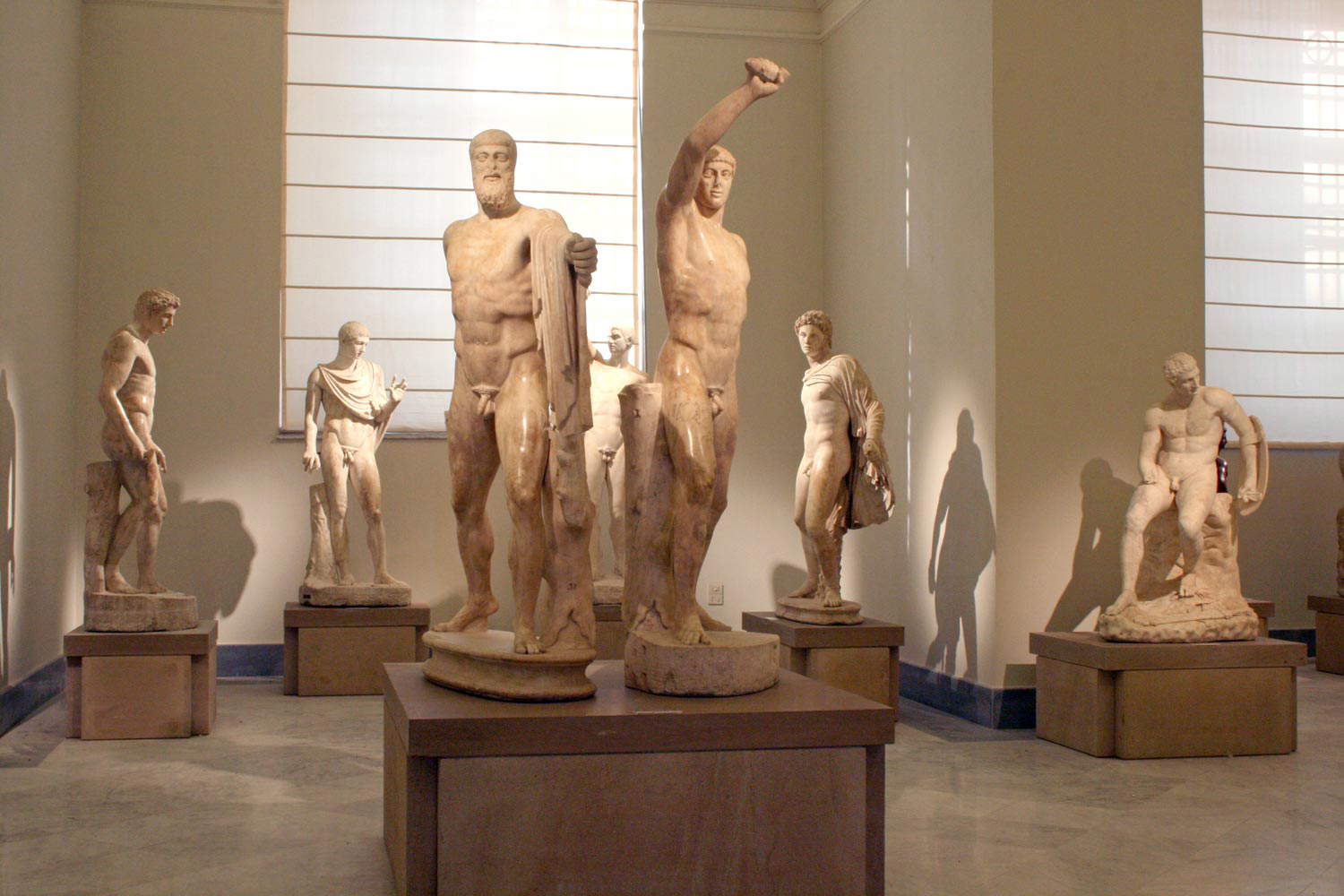“We can say that MANN has never been so great.” This was stated by the director of the National Archaeological Museum of Naples, Paolo Giulierini. The reference, out of metaphor, is precisely to the construction sites, from the “historic opening” on April 3 of the MANN’s west wing to the ongoing work in the basement. The third interview in Finestre sull’Arte’s serial investigation, after Brera and the Gallerie dell’Accademia in Florence, moves, therefore, to the South. Giulierini also claims another record, that of being “the first and only ones in Italy to publish strategic plans and annual reports.” And as with Bradburne and Hollberg, safeguarding activities do not seem to have been sacrificed in favor of a prevailing interest in enhancement, as feared at the beginning of the Franceschini Reform. On the contrary, the museum has launched an innovative project with the Carabinieri’s Nucleo Tutela. He agrees with his colleague from Florence that it would be necessary to revise the distinction between first-tier and second-tier museums, to the latter of which the MANN also belongs, based on its achievements. And, then, the Museum as a subject of urban regeneration and participating in equalization in favor of less “strong” institutions to the extent of one million euros per year. Gratuity assessable only if state funding is increased. And to conclude, autonomy promoted with a solid 9, but provided it remains as it is, limited, with the Ministry involved in decision-making and providing human resources. And if “comparison on numbers” is something that “mainly interests journalists” (but isn’t it the Ministry that meticulously disseminates them?) we remain with the desire to know what the other numbers would tell, the subject of dialogue, headlights off, with colleagues from other museums.

MS. There are two different degrees of autonomy: general and non-general management level museums. What does the fact that MANN is subject to the powers of direction, coordination and control of the Museums Directorate entail?
PG. This division reflects the initial status in 2014. I think it might be appropriate, in some cases, to revise the division also in light of the achievements of individual institutes.
The Ministry remains to varying degrees involved in the decision-making process. In your opinion, would it be appropriate or on the contrary deleterious to take a further step by recognizing legal personality to these “special” institutes?
I believe that the Ministry should always be involved in the major strategic choices of the autonomous institutes, but they can also contribute innovative experiences made in the field from the outside.
Even the allocation of staffing is attested to the central administration, which provides (or should provide) for professional figures. Is the directing museum understaffed? Would it be preferable for the director to designate “human capital,” with adequate and specific training, according to the technical-operational needs he or she has? Would financial autonomy go so far as to cover salaries as well?
No institute, except perhaps the Colosseum, Pompeii and the Uffizi, would be able to pay its own staff, unless cuts were painful and in any case insufficient to create a minimum core team. It is in prospect to provide for new additions to the staffing plan and, perhaps, new professional skills. Minister Sangiuliano has put the problem front and center, and there are good signs for the future.
How does the Museum participate in the Financial Rebalancing Fund among state institutes and places of culture?
The Museum allocates 20 percent of its income, so on average, net of the two years of Covid, it contributes about 1 million euros a year.
One of the main changes introduced for autonomous museums is their governance. Does the director-committee-scientific committee organization work at the management level, not in theory, but really in practice? How often do you convene the scientific committee? In an interview, then-Dg Antonio Lampis observed that the members of these bodies often instead of “supporting the director often ’paralyze’ his activity out of personalism.” If you agree with this observation, what could be the alternative?
Our relations with BoD and Scientific Committee are very good. I believe that these bodies should preside over major strategies and choices, not the day-to-day aspects of management.
Let’s turn to scientific autonomy: can you tell us about research activities and your enhancement plan? Is it connoted by a distinctive feature?
As far as scientific research is concerned, I present only a series of examples: we have about 50 agreements, some of them on a fee basis, with universities and research institutes; we are winners of three Miur calls together with CNR and other entities; with high-profile teams we have produced in 8 years 300 exhibitions between Italy and abroad, accompanied by a scientific catalog; and we boast a dense network of relationships with several museums. The Museum publishes three museum publishing series (archaeology, enhancement and notebooks), hosts conferences, and directly conducts research programs such as Mann in Colours. We were the first (as of 2017) and only in Italy to publish strategic plans and annual reports, we have our own restoration laboratories, recently expanded tenfold, an online management program for our archival data, and an innovative project with the Nucleo Tutela dei Carabinieri for the study and valorization of seized materials. This is just by way of example.
Do you have any citizen retention initiatives planned? If so, which ones? How does the museum fit into the dynamics also of economic, as well as cultural, development of the community and the target area?
We have for years introduced the annual subscription card, a democratic means that, for a symbolic price (little more than a single admission ticket), allows free daily participation in the life of the museum. Cultural development is perfectly described by our project dedicated to the Cultural District, in which the Museum is a subject of urban regeneration, while a study by the University of Naples Federico II, soon to be released, is measuring the social impact of the Museum. We need only look, moreover, at the resurgence of businesses around the Mann to understand the benefits our visitors bring to the neighborhood.

Chapter protection: to whom does it belong? To the museum or to the Superintendency? In Sicily, where the corporatist model applied to cultural institutions was introduced earlier than in the state, back in 2000, it is expected that the Superintendent will chair the Committee. Do you consider this an alternative “formula” or do you think it could fuel conflicts between the Superintendent and Director?
The protection of the assets assigned to the autonomous museum is basically up to the Director. We all studied at the same universities and have a lot of work in our respective fields. I would avoid overlapping.
Topical issue, free museums. Gabriele Finaldi, who directed it until last August, said “free admission is in the DNA of the National Gallery” (of London). Genetics teaches that DNA can mutate, Do you think this is a model that can be imported to Italy, with the necessary adaptations? Is it conceivable to totally give up the resources produced by entrance fees?
Free admission is strictly subject to the state funds allocated to museums. As these increase, the cost of tickets can be lowered. On the other hand, one must consider the amount of funds received by Anglo-Saxon museums from the state or American museums from banking foundations. One cannot compare non-homogeneous realities and, I repeat, 22 euros to visit collections and exhibitions does not seem to me an exaggeration (it is the price of a pizza with a beer and a coffee). On the other hand, at the British, exhibitions are paid for separately. At ours they don’t.
Are there moments of exchange, such as technical tables convened with some regularity, among you autonomous directors to compare different experiences? Replicate successful ones or solve common problems? Or has a competitive spirit prevailed? Doesn’t the most immediate (but also the most trivial) comparison on visitor numbers create some performance anxiety?
Comparison on numbers is something that mainly interests journalists because it is clear data that, however, only partially describes museum activities. I, when I talk to colleagues and I do it often, agree to consider other parameters: number of research projects, social projects, subscribers, digital experiences.
In summary what is your balance sheet of the autonomist experience? If you had to quantify it in a grade from 0 to 10?
In my opinion, autonomy is worth 9. In order to get to 10, some operations are needed for the director to boost his action. On the other hand, periodic verification is appropriate, to assess whether all sites are able to proceed along this path, which, in my opinion, needs gradualness and progressiveness.
When does your contract end? What programs do you have? Will you participate in the new competitions?
My second term ends on September 30, 2023. In this last period we have been very focused on the historic opening of the Museum’s western wing, with rooms never seen in 50 years housing the new Campania Romana section, and with the promotion of two major exhibitions for spring-summer: Picasso and the Ancient and Alexander the Great. The second part of the restoration of the Battle of Isso mosaic, a major undertaking that no one had attempted before, is now underway. After properly deploying 50 million in funds (we can say that the Mann has never been this big), the start of a new site for work in the basement (11 million euros) is ready. My plans include months of intensive work with the goal of recovering from the slowdowns due to the pandemic period, continuing and initiating all the actions prefixed in our two strategic plans.
Warning: the translation into English of the original Italian article was created using automatic tools. We undertake to review all articles, but we do not guarantee the total absence of inaccuracies in the translation due to the program. You can find the original by clicking on the ITA button. If you find any mistake,please contact us.